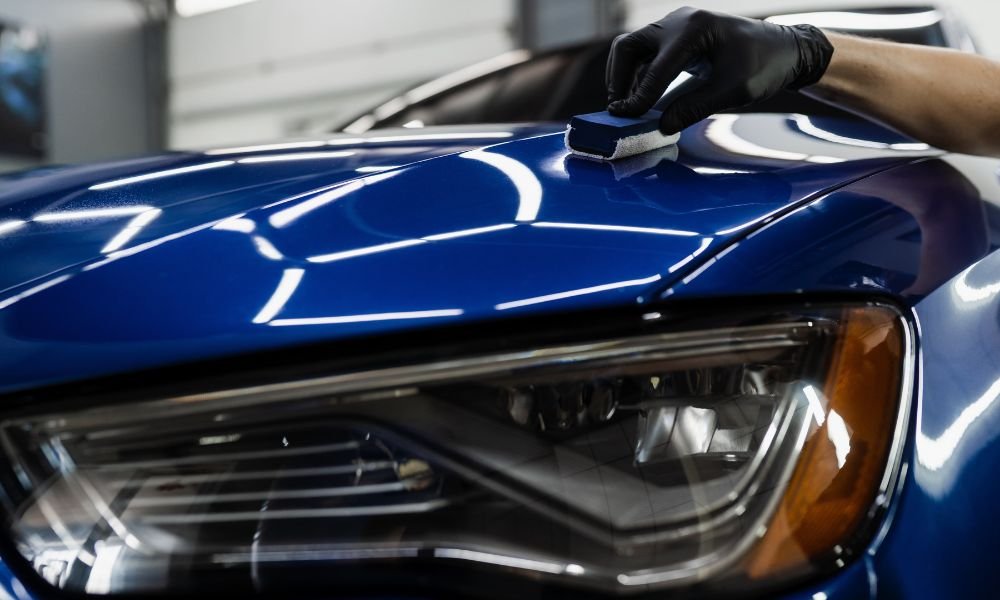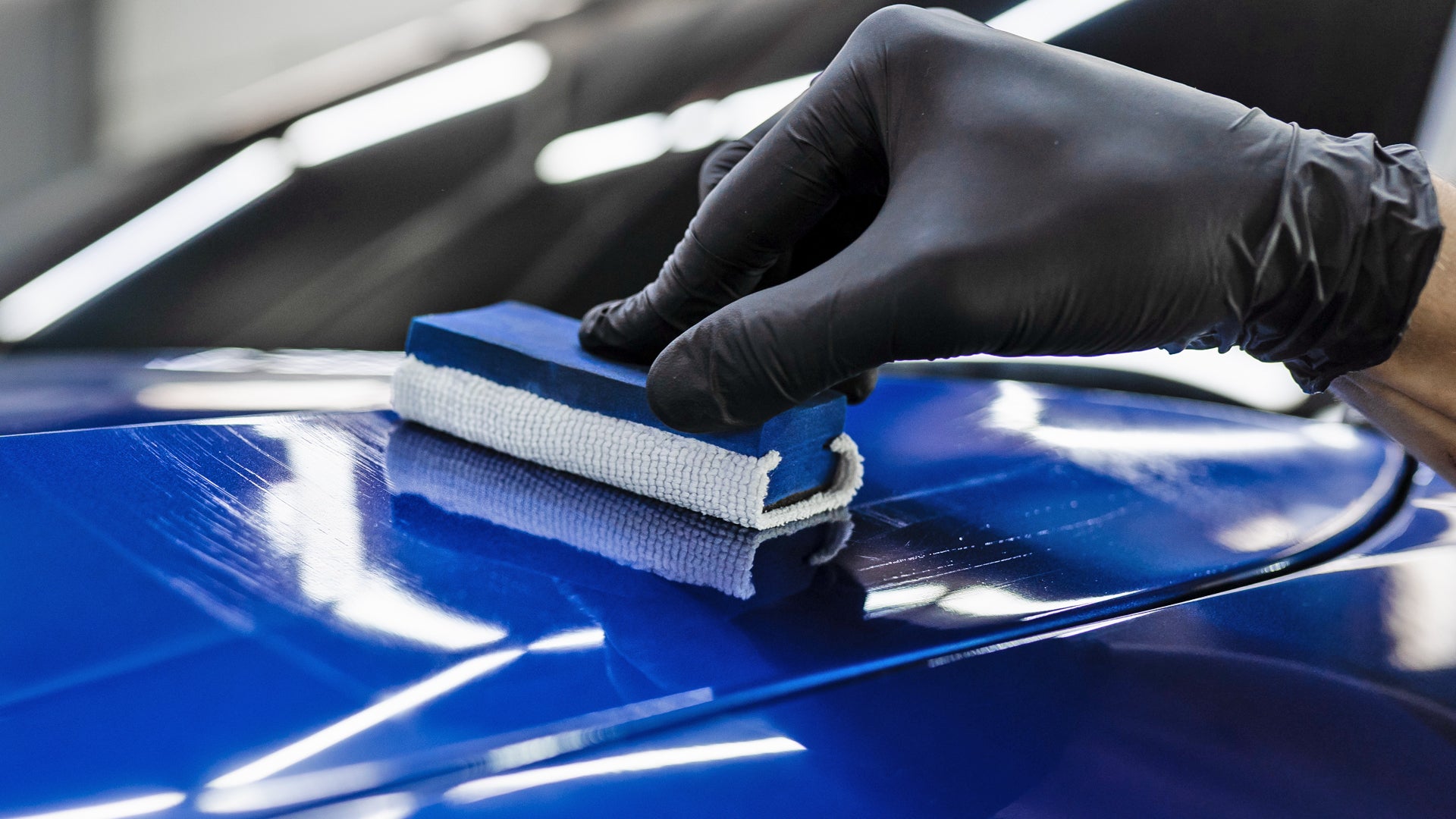Ceramic Pro: Transform Your Lorry's Defense and Aesthetic appeal
Wiki Article
The Scientific Research Behind Ceramic Layer: Exactly How It Enhances Your Vehicle's Aesthetic and Durability

Recognizing Ceramic Covering Chemistry
The chemical composition of ceramic coatings plays an important duty in determining their longevity and safety residential or commercial properties on lorry surface areas. Ceramic coverings are typically comprised of silicon dioxide (SiO2), which is a primary part providing solidity and heat resistance. Various other ingredients such as titanium dioxide, silicon carbide, and polysilazanes are typically included to boost particular properties like UV hydrophobicity, resistance, and adhesion.
Silicon dioxide, likewise called silica, forms a transparent and solid layer on the automobile surface when applied appropriately. This layer functions as a guard, securing the paint from environmental impurities, UV rays, oxidation, and chemical spots. Titanium dioxide aids in obstructing unsafe UV rays that can create paint fading and wear and tear. Silicon carbide is recognized for its abrasion resistance, making the ceramic layer tough and sturdy versus physical damages. Polysilazanes are used to enhance the coating's adaptability and bond to the lorry's surface, making certain lasting defense. Comprehending the chemistry behind ceramic layers is important for both applicators and vehicle proprietors to value the value and advantages these finishings supply in maintaining the aesthetic charm and long life of lorries.
Improved Gloss and Mirror-like End Up
Understanding the chemical structure of ceramic layers not only discloses their protective residential properties yet also clarifies just how they contribute to accomplishing an improved gloss and mirror-like finish on lorry surface areas. The key to the shiny effect depends on the nano-ceramic particles existing in the finish. These fragments fill out tiny pores and blemishes externally, developing a smooth and level coating. As light hits the layered surface area, it mirrors evenly, giving the appearance of a deep, shiny sparkle. Furthermore, the chemical structure of ceramic coatings permits them to create a strong bond with the lorry's paintwork, stopping oxidation and keeping the quality of the coating with time. This bond additionally stands up to ecological impurities, such as dirt and gunk, that can boring the sparkle of the vehicle. The mix of filling up homes, light reflection, and lasting security makes ceramic finishes a preferred option for those looking for a vivid and mirror-like coating for their cars.
Influence on Paint Defense and Long Life
Ceramic coverings for cars dramatically boost the long life and defense of the paintwork. By developing a chemically resistant layer on top of the car's clear layer, ceramic layers act as a barrier against various environmental pollutants that can damage the paint over time. These coatings are made to ward off dirt, water, road salt, bird droppings, and other dangerous substances, decreasing the danger of paint oxidation and corrosion. Additionally, the hardness of ceramic finishings gives a level of scratch resistance, assisting to preserve the car's look for an extended period.In terms of long find out here life, ceramic layers offer a resilient remedy compared to conventional waxes or sealants. Generally, the safety residential or commercial properties of ceramic finishes add significantly to preserving the car's paintwork and improving its aesthetic charm over a prolonged period.
Resistance to Contaminants and Severe Elements
With the protective shield offered by ceramic finishings against different environmental contaminants and elements, cars are able to maintain their beautiful look in spite of exposure to extreme problems. Ceramic layers create a strong barrier that wards off water, dirt, dust, and various other typical contaminants, avoiding them from bonding to the car's surface. This hydrophobic nature not just makes cleansing easier but likewise minimizes the danger of water areas and etching triggered by acidic pollutants. Furthermore, the chemical resistance of ceramic finishings assists shield the paint from bird droppings, bug splatter, tree sap, and other corrosive compounds that can damage the coating over time.Furthermore, ceramic layers use UV defense, shielding the automobile's paint from the sun's damaging rays that can create fading and oxidation. This resistance to UV damage aids preserve the shade intensity and luster of the paint for longer periods. By developing a lasting and long lasting barrier, ceramic layers ensure that the car's exterior stays shielded versus a vast array of contaminants and severe aspects, protecting its visual allure and durability.
Application Techniques and Upkeep Tips
For optimum results when using ceramic coverings to lorries, making use of appropriate techniques and sticking to suggested maintenance techniques my website are necessary. Before using the ceramic finishing, it is important to extensively clean and decontaminate the automobile's surface area to make sure correct bond.When using the ceramic coating, it is suggested to function in tiny sections to ensure also coverage and to avoid the product from drying too promptly. Using applicator pads or microfiber cloths, apply the layer in a crisscross or up-and-down motion, depending upon the product's guidelines. After the coating is applied, allow it to cure for the specified time before buffing off any residue.
In terms of maintenance, regular washing with pH-neutral soaps and avoiding rough devices or extreme chemicals will certainly assist protect the ceramic layer's honesty. Routine evaluations for any type of damage or endure the finishing can likewise help maintain its protective residential or commercial properties in time.

Verdict
In verdict, ceramic coating enhances a vehicle's aesthetic appeal and sturdiness with its chemical structure, offering a glossy finish and protecting the paint from environmental contaminants. Its resistance to harsh components and convenience of maintenance make it a popular selection for car proprietors seeking to maintain the appearance of their lorries. Generally, ceramic finishing is a scientifically backed remedy for preserving the appearance and long life of your automobile.Understanding the chemistry behind ceramic coatings look at here now is critical for both applicators and automobile owners to value the value and benefits these finishes provide in keeping the aesthetic allure and durability of vehicles. (ceramic pro)
Recognizing the chemical structure of ceramic layers not only exposes their protective homes but additionally drops light on just how they contribute to attaining an enhanced gloss and mirror-like surface on vehicle surface areas. By forming a chemically resistant layer on top of the lorry's clear coat, ceramic finishes act as a barrier versus numerous environmental impurities that can damage the paint over time. Generally, the safety buildings of ceramic finishings add considerably to maintaining the car's paintwork and boosting its aesthetic appeal over a prolonged duration.
In conclusion, ceramic finish boosts a car's visual allure and sturdiness with its chemical composition, offering a shiny finish and safeguarding the paint from ecological impurities.
Report this wiki page